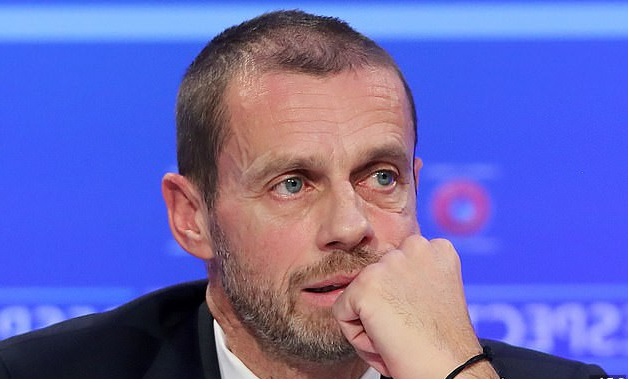UEFA president, Aleksander Ceferin has spoken out on the proposed new plans for the European Super League.
The rebel breakaway league was given a boost by a court ruling on Thursday morning, December 21 when the European Court of Justice ruled that UEFA and FIFA were found to have acted against competition law in blocking its formation in 2021.
The ruling handed out marked the latest stage in a legal process initiated by the European Super League Company after clubs who participated in the breakaway plans were threatened with sanctions by the football governing bodies- FIFA and UEFA, while they faced overwhelming criticism from fans.
The new format – which was revealed by A22 CEO Bernd Reichart in a presentation – was immediately rejected by Manchester United, Bayern Munich and Atletico Madrid.
However, Ceferin urged the breakaway competition – which has continued to receive strong backing from Real Madrid and Barcelona – to go ahead.
He said: ‘I am so happy that we saw the presentation and that it is clear now that they are offering a closed competition which we knew all the time, but they tried to present publicly that it’s not true.
‘We will not try to stop them. Even before we never tried to stop them and we said that publicly many times.
‘They can create whatever they want. I hope they start their fantastic competition as soon as possible… with two clubs.
‘I hope they know what they are doing, which I’m not sure they do.
‘Football is not for sale. We can show that many times, we did that many times with all of football stakeholders and European society (in 2021) and absolutely nothing can change that.’
When announcing the plans on Thursday morning, Reichart revealed the European Super League would include both a men’s and women’s competition, with 64 teams competing in the men’s and 32 in the women’s.
In term of the men’s competition, the 64 clubs would be split into three separate leagues – star, gold and blue – with the star league the strongest and blue the weakest.
The star and gold leagues would have 16 teams separated into two groups of eight, but the blue league would have 32 clubs, split across four groups of eight.
Each team would be guaranteed 14 matches with everyone playing their group stage opponents home and away on midweek dates between September and April.
The top four clubs from both groups in the gold and star leagues and the top two teams in the four blue groups would then take part in their respective league’s knockout stages during the spring.
Two-legged quarter-finals and semi-finals would follow, before the winners of each league would be crowned following finals at neutral grounds.
The plan – which is being led by sports consultancy firm A22 – insisted it was ‘based on sporting merit with no permanent members’.
As a result, the proposals include promotion and relegation with the bottom team in both groups of the Star League being relegated and replaced by the two finalists in the Gold League.
This is the same for the blue league finalists, who will replace the teams that finish bottom of each gold group.
There is an even bigger turnover from the blue league, with 20 clubs leaving the competition each season and be replaced by 20 others based on their domestic performances.

